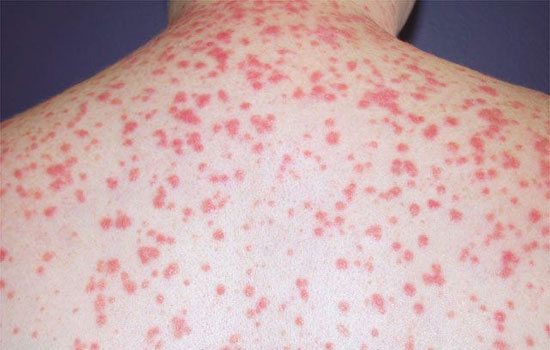
14 Feb Psoriasis vs Eczema
Psoriasis and eczema are both common skin conditions that cause rashes, itching and redness. It can be hard to tell the difference between the two conditions, but there are important distinctions that you need to know about if you’re looking for effective home treatment.
Psoriasis is a chronic autoimmune condition where the body produces new skin cells more quickly than normal. It’s a condition that is often hereditary and affects around 3% of the population – often appearing in early adulthood and triggered by things like stress, skin injuries or certain medications.
Eczema, on the other hand, is a long-term condition that affects around 10% of young adults. It typically develops during childhood and is the result of irritation to the skin from allergens or irritants such as certain soaps or detergents, pollen, and even dust.
So how do you tell the difference between psoriasis and eczema?
Let’s look at the most common symptoms of each condition…
Common Psoriasis Symptoms:
- Red patches on the skin that are often covered by silvery scales and sometimes a
crusty buildup of dead skin cells called plaques (most commonly found on knees, elbows and scalp) - The edges of a psoriasis rash are usually well-defined and it’s possible to feel where the
rash starts by stroking a finger over the skin. - Dry, cracked or itchy skin that can bleed if scratched
- Psoriasis can also cause pain when walking, sitting or standing for long periods of time
due to inflammation in the joints and tendons. This is known as psoriatic arthritis, and it
affects around 30% of all people with psoriasis.
Common Eczema Symptoms:
- Dry skin that’s often itchy, red and scaly (most commonly found on the insides of elbows, behind knees and inside wrists)
- Dark patches of skin around joints like ankles or wrists
- Eczema can also cause small blisters that bleed if scratched. This is often called “weeping eczema”. But this is not to be confused with the oozing and crusting seen in psoriasis plaques.
- In contrast to the clearly defined edges visible with a psoriasis rash, eczema looks more
like inflammation where the edges blend into the skin.
Treatment Options
Now that you know the most common symptoms of each condition, let’s look at how they are treated.
Psoriasis is typically treated with a combination of topical medications (creams, ointments, and shampoos), ultraviolet light therapy (UVB) or systemic medications (pills).
Eczema is treated with a combination of moisturisers and topical treatments such as corticosteroids or calcineurin inhibitors, and avoidance of triggers. While there is no cure for eczema, most cases can be controlled by following these steps. Phototherapy (also called UVB light therapy) is also an option for those with severe eczema that is not responding sufficiently to topical treatments.
If you’re not sure which condition you have, or if you need more information about the treatment options available to you, please talk to your doctor. They will be able to give you an accurate assessment and create a treatment plan that’s right for you.
UVB Light Therapy at Home
UVB light therapy treatment (or phototherapy) is an effective treatment for people with both psoriasis and severe forms of eczema that is growing in popularity. It is a safe and non-invasive treatment that does not require any special preparation or aftercare and it works by exposing the skin to short-wave ultraviolet light, which helps to slow down the production of new skin cells and reduce inflammation.
Traditionally it’s a treatment that is offered in hospitals and dermatology clinics, however thanks to the many advances in technology, UVB phototherapy is now available as an at home treatment option.
Home UVB treatment is becoming increasingly popular as it is more flexible and convenient, and uses the latest UVB light technology to deliver hospital-level treatment from the comfort and privacy of your own home. Many are finding this treatment option to be a valuable addition to their treatment regime and are reporting significant improvements in their symptoms. Home UVB light therapy is also an excellent maintenance tool for those who have had good results from traditional hospital-based treatments, so they can manage any flare-ups before they get out of control.
UVB light therapy units using the same high UVB narrowband tubes used in hospitals worldwide for the treatment of psoriasis and other skin conditions are now available to hire for home use and are clinically proven to help treat and manage psoriasis, eczema, vitiligo, and other skin conditions that respond to UV light treatment.
Conclusion
Home UVB phototherapy is ideal for people who are looking for a safe, pain-free way to reduce itching and inflammation and improve the appearance of their skin. It can be used as a standalone treatment or in combination with other therapies like topical medications or moisturisers.
If you are looking for a convenient and effective solution to manage your skin condition at home or are interested in learning more about home UVB light therapy treatment for psoriasis and eczema, please feel free to get in touch. We’ll be happy to answer any questions you may have and help you get started on what could be a life-changing journey to healthier skin

Sorry, the comment form is closed at this time.